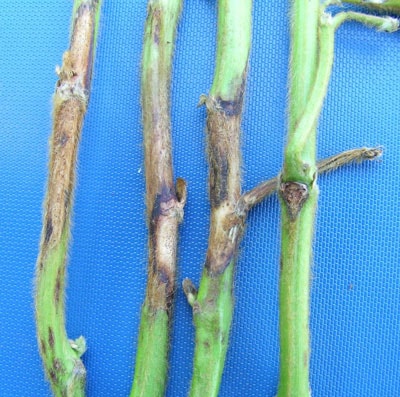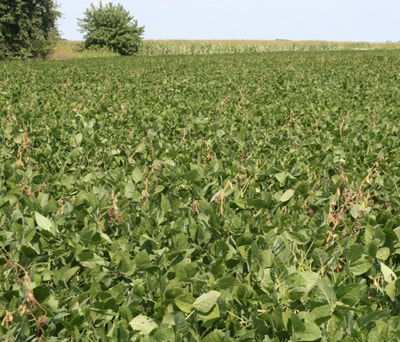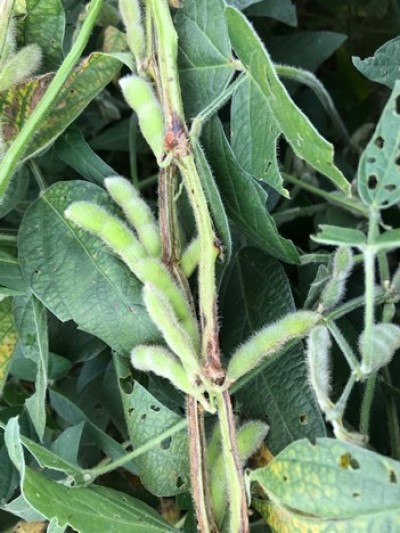 Figure 1: Early stem canker lesion near a node. (Source: GROWMARK, Inc.)
Figure 1: Early stem canker lesion near a node. (Source: GROWMARK, Inc.)
- Stem canker is a disease complex caused by several species of Diaporthe fungi
- Disease is favored by wet weather after canopy closure
- No in season management is effective for managing these diseases
- Crop rotation, cultivar selection, and residue management help reduce these pathogens in subsequent growing seasons
Stem canker is a disease caused by several Diaporthe fungi. Historically, the disease has been split into Northern and Southern stem canker, though recent research has indicated that there are multiple other Diaporthe species involved. For this reason, stem canker is considered a disease complex. Stem canker can survive in infested soybean residue or in the soil for several years. Seeds can also be infected. The species that are considered part of the Northern stem canker group are favored by cooler temperatures and extended periods of wet weather. Conversely, those in the Southern stem canker group are favored by wet weather and warm temperatures.
Disease Cycle
In general, spores are released from fungal structures contained on infected residue during late April-June. Spores are splashed onto plant tissue during rainy weather when soybeans are in the vegetative stages. Symptoms are not observed until after R1. If the environment remains conducive to infection there can be secondary spore production and infections, but these do not significantly impact soybean yields.
Symptoms
Initial symptoms are reddish-brown lesions that appear near the nodes (Figure. 1) and eventually turn into sunken, dark brown cankers that expand with the stem (Figure 2). Plants may be affected in patches or singly, and may develop a "Shepard's crook" at the top of the plant, and wilt (Figure 3). Northern stem canker typically impacts nodes in the middle and upper part of the plant, and lesions are generally restricted around the infected node and above. Conversely, Southern stem canker lesions may progress to the stem base, and typically run down one side of the stem (Figure 4). In addition, interveinal chlorosis and leaf blight may be observed in plants impacted by Southern stem canker.
Management
Unfortunately, there are not effective chemical tools available to manage stem canker. Some literature pieces will mention "fungicides" but they may only reduce disease severity when combined with resistant varieties and when applied early. Even when moderately effective, fungicides will not control infections already present in the field that originated from the soil or crop residue. Seed treatments have not been demonstrated to effectively manage this disease.
The best way to manage stem canker is using a combination of cultural practices and resistant varieties. In fields with a history of stem canker, consider planting a resistant variety (check with your seed dealer on what resistant varieties may be available in your area). Since the fungus can survive in the soil and crop residue, deep plowing may help reduce the source of inoculum. Rotating soybean fields to non-host crops such as corn, wheat and sorghum are recommended to reduce the amount of inoculum available to infect the next soybean crop. However, because the fungus can survive in the soil for several years, long rotations (two years or more) are recommended especially after heavy stem canker infestations.
Contact your FS Crop Specialist for your agronomic information.

Figure 2: Stem canker lesions. Note the sunken appearance and longitudinal expansion with green tissue below and above the canker. (Source: lsuagcenter.com)

Figure 3: Top dieback caused by Diaporthe spp. Note that the dead leaves are attached to the plant. (Source: GROWMARK, Inc.)

Figure 4. Southern stem canker often is only observed on one side of the stem, and may spread to the soil line. (Source: GROWMARK, Inc.)